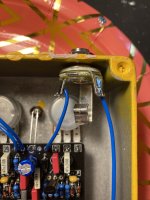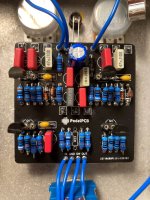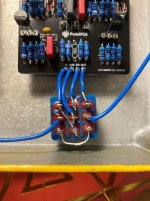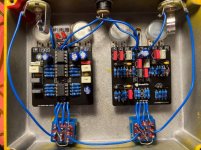jwyles90
Well-known member
Hey all,
I just finished putting together a 2 in1 build today and it’s giving me some trouble. I’ve got a Greengage OD and Muffin Fuzz (Green Russian specs) in there. The Greengage side of things is working fine, but when I turn on the fuzz side I’m not getting any kind of signal. When I turn the tone knob I can kind of hear this weird like, whooshing sound as I turn it but otherwise nothing is happening. I took an audio probe to it and was able to hear my guitar when I touched it to the “In” section of the 3pdt, as well as R1. After that I lost the signal.
I just finished putting together a 2 in1 build today and it’s giving me some trouble. I’ve got a Greengage OD and Muffin Fuzz (Green Russian specs) in there. The Greengage side of things is working fine, but when I turn on the fuzz side I’m not getting any kind of signal. When I turn the tone knob I can kind of hear this weird like, whooshing sound as I turn it but otherwise nothing is happening. I took an audio probe to it and was able to hear my guitar when I touched it to the “In” section of the 3pdt, as well as R1. After that I lost the signal.
Last edited:





